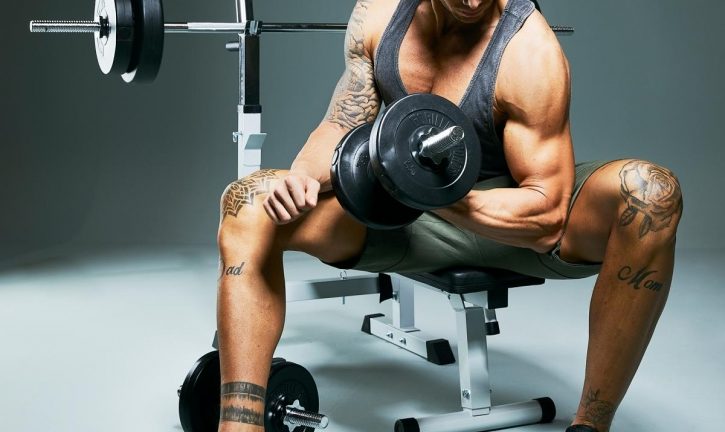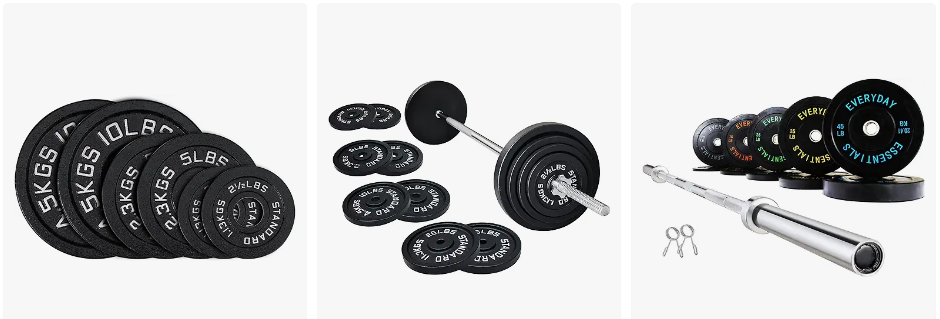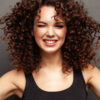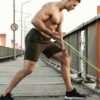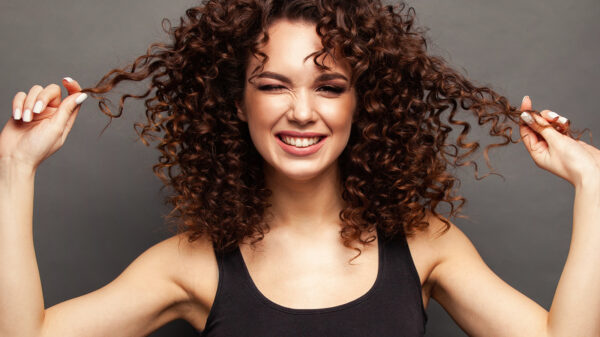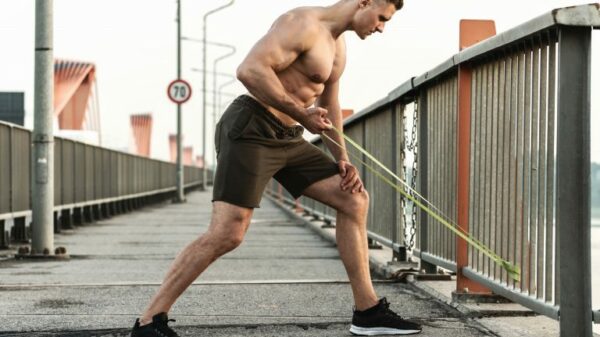Did you know that in ancient times, athletes, fighters and gladiators used dumbbells to strengthen their bodies? dumbbell were even a part of Olympic events.
Today, dumbbell training is designed to build up muscles and strength. The main difference between working out on machines and working out with dumbbells is that you can target muscles in isolation with dumbbells. There are also lots of auxiliary muscles used in most dumbbell exercises. Using dumbbells is the only way to keep your body, especially your torso, stable and that is exactly what makes dumbbell exercises so effective.
If you want to target certain muscles, you can’t avoid weight training. We’ll show you effective dumbbell exercises to get your body in awesome shape! Whether you’re a beginner, advanced or professional, we have the dumbbell exercises that will make sure you get amazing results.
The advantages of dumbbells
Some people prefer to work with dumbbells, while others prefer barbells. Ideally, a combination of both will deliver an effective full-body workout at home. However, the advantage of dumbbells is that you can train muscles in isolation, with the movements being more natural and better adapted to our anatomy. They can also help improve coordination skills. If you train correctly with dumbbells, you prevent or compensate for muscular imbalances. However, it’s important to choose the right weight. But more on that later.
In some exercises, barbells are not quite as demanding in terms of coordination. This is a plus for beginners. Its also possible to work with heavier weights because the muscles responsible for stability have less work to do.
Free weight warning
Always take care when working out with weights. Even lifting incorrectly to get to the starting position can put massive strain on your back. In general, free weights such as dumbbells or barbells require a little more practice than multi gym. Even the smallest changes activate other muscles. If you don’t work with a trainer, you should train in front of a mirror or with a partner to ensure correct posture and balance.
THE TRAINING PRINCIPLES
How do dumbbell exercises make my muscles grow?
After a solid dumbbell workout, session, your body repairs or replaces damaged muscle fibers through a cellular process where it fuses muscle fibers together to form new muscle protein strands. The muscles regenerate and gain strength and mass. The more you train, the bigger the individual muscles become.
When do muscles grow?
It’s important to remember that muscles grow during the recovery phase. The training itself only stimulates growth. Beginners should give the trained muscle groups 48 hours to regenerate. Advanced and professionals can shorten this time to 36 or even 24 hours.
What should I know about pumping dumbbells at home?
Dumbbell exercises are more challenging than most people think. Because you’re moving the weights freely in space, you don’t have the support you get when you work out with equipment. When you work out with dumbbells you also train the deep muscles that are so important for posture, stability and back health. However, you need to consider this additional muscle work when planning your dumbbell workout at home. Make sure you’re using the right amount of weight so you can maintain a stable posture and lift the dumbbells with control and coordination.
What should I know about weights with in dumbbells and barbells ?
What weights should you be using for your dumbbell and barbell sessions?
Depending on the exercise, beginners start with 2-4kg dumbbells.
Advanced users choose 5-8 kg dumbbells.
The optimal dumbbell training consists of multi-joint and single-joint exercises.
Rule of thumb: The right weight is chosen if you can just barely perform the last repetition correctly.
With barbells, beginners start with 10- 20 kilos, depending on the exercise.
Advanced users can choose significantly higher weights depending on the exercise.
You should repeat each exercise 12-15 times.
For advanced and professionals who work with high and very high weights, 6-8 repetitions. 3 sets per exercise with a 60 second break in between are ideal.
THE TRAINING PROGRAMS
The basic rules for dumbbell workouts
For an effective dumbbell session at home, you should observe a few basic rules:
Warm up for a few minutes before each workout.
Beginners train 2 or 3 times a week for the first 6 to 8 weeks.
Each time you workout, do complex exercises first, and then do isolated exercises.
First train the flexors, then the extensors.
First train the extremities, then the core muscles.
Advanced users can increase to 4 or even 5 days a week but should not train the same muscle groups on consecutive days.
DUMBBELL TRAINING FOR BEGINNERS
6 awesome exercises to begin with
As a beginner, 6 exercises with 3 sets and 12 to 15 repetitions per set are sufficient. If you train 2 to 3 times a week, you’ll build up a good base in 6 to 8 weeks and be able to do more complex exercises.
1 Squats with dumbbells
Targets the thigh and gluteus muscles.
Take a dumbbell in each hand and hold them next to your body with your arms outstretched. With a straight back, bend your knees up to a 90-degree angle, hold the low position for a short time and then straighten up again without stretching your legs completely.
2 Bench press with dumbbells
Targets the chest muscles and the triceps
Lie on a weight bench or, if you don’t have one, on the floor. With a dumbbell in each hand, raise them vertically over your collarbone until your arms are almost fully extended. Then slowly lower both weights until they are in line at mid-chest height. Then push the weights back up in an arching motion until they touch across your chest.
3 Dumbbell Row
Targets the large back muscles, the glutes and hamstrings
With a dumbbell in each hand, bend your knees while at the same time leaning your completely straight upper body forward. From this position you pull the dumbbells up until they just touch your upper body. Hold briefly and then lower it again.
4 Shoulder press with dumbbells
Targets the anterior deltoid and triceps
Sit on a stool or bench. Grab a dumbbell in each hand and hold it at shoulder height with your arms bent and the tip of the dumbbell points forward. Then stretch your arms up and rotate the dumbbells so your fingers are visible from the front. Hold briefly and lower again.
5 Biceps curls with dumbbells
Targets the biceps and upper arm muscles
Sit on a bench or a stool. Hold a dumbbell in your right hand and lean the outside of the upper arm against the inside of the thigh. Then bend your arm with the dumbbell. The elbow does not move forward and the outside of the upper arm maintains contact with the inside of the thigh. Hold briefly and stretch again. After three sets, repeat with the dumbbell in your left hand.
6 Triceps extensions with dumbbells
Targets the triceps and the elbow muscles
Grab a dumbbell and stand upright with your knees slightly bent. Bring your arm with the dumbbell straight over your head. Place your free arm across your upper body. Then lower the dumbbell behind your head. At the end of the movement, pause for a moment and then straighten your arm again. After three sets, take the dumbbell in the other hand.
BARBELL TRAINING FOR BEGINNERS
4 killer exercises to start with
Here are four exercises that beginners can do with barbells. Because its so important to learn the correct sequence of movements, try these without any weights at all until you’re confident with the move. After three training units, you can begin to add a few weights.
1 Squat with a barbell behind your head
Targets the glutes, quadriceps and hamstrings
Hold the barbell behind your head with both hands. Stand hip-width apart with your feet pointing slightly outwards so your knees can follow your feet. Then squat up to a 90-degree angle with your back absolutely straight and the abdominal and gluteal muscles tense. Hold briefly and then straighten out again without fully pushing your knees.
2 Bench press with barbell
Targets the chest muscles, triceps and anterior deltoids
If you have a weight bench, that’s ideal but you can also lie on the floor. Hold the dumbbell in a wide grip position and then slowly lower it to just under your chest. Hold briefly and then press up again. Do not fully extend your arms to maintain muscle tension.
— Important: Keep the weight above your chest and not above your head. For heavier weights, train with a partner.
3 Rowing with the barbell
Targets the large back muscles, biceps and glutes
With the barbell in front of your feet, bend your knees with your back straight, hold the barbell in a wide grip and lift it up to the height of your shin. From this position you pull the dumbbell up until it touches your body. Hold briefly then lower it again.
4 Triceps extensions with a barbell
Targets the triceps and elbow muscles
Sit upright on a bench or stool and lift the barbell at shoulder width. Then bring your arms straight over your head. The core muscles will be tense. Then slowly lower the dumbbell behind the head to the back until the forearms touch the biceps. Hold briefly and then straighten your forearms again.
ADVANCED WEIGHT TRAINING
4 epic exercises
If you’re a gym junkie, your central nervous system adjusts to the extra workouts and your technique becomes more ingrained. Experts call this neural adaptation. As your strength and coordination go into auto drive, it makes sense to add more weight and develop more muscle. Here are two exercises with barbells and two with dumbbells to help vary you training.
1 Lunge with barbell
Targets the quadriceps, glutes and hamstrings
Place the barbell bar on your shoulders with a wide grip. The feet are hip-width apart, the knees slightly bent. Then tense the core muscles and take a big step forward with one leg. Next, lower your back knee just above the floor. Hold briefly and return to the starting position. Then take a step forward with the other leg.
2 Row upright
Targets the hood muscles, the anterior deltoid muscles and the biceps
Stand hip-width apart with the barbell in a tight overhand grip. Tighten your core muscles and pull the dumbbell up tightly along your body up to your chin. Keep your hands below elbow level. Hold briefly and lower again.
3 One- legged squat with dumbbells
Targets the quadriceps, glutes and hamstrings
With a dumbbell in each hand, stand up straight, and step forward. From this position bend your knees and hips. The front knee should not go beyond the tip of the foot. Hold briefly and then stretch again. Change legs after each set.
4 Lateral raise backwards with dumbbells
Targets the posterior, lateral and anterior deltoid and rhomboid muscles
Hold a dumbbell in each hand with your knees slightly bent. Then bend your upper body forward about 45 degrees with your back straight. The weight plates rest on the thigh. From this position, lift the dumbbells symmetrically upwards and bring them up to shoulder height. Hold briefly and lower again.
DUMBBELL WORKOUTS FOR PROFESSIONALS
2 deadly exercises for pros
So, the gym is your second home and you’ve worked hard for a long time to get that ripped body. Want a challenge? Here are two awesome exercises for professionals.
1 Bulgarian squat with barbell
Targets the quadriceps, glutes, hamstrings, biceps, and clod muscles
Get your low bench with your back in front of it. Place the barbell on your shoulders behind your head. Then stretch one leg back and place the toe on the bench. From this position, slowly bring your back knee down until your front thigh is parallel to the floor. Hold briefly and press up again. Change legs after each set.
Tip: You can also do this exercise holding two dumbbells next to your body.
2 Renegade push-ups with dumbbells
Targets the chest muscles, shoulder muscles, triceps, biceps and glutes
Place two dumbbell bars shoulder width apart on the floor then go into the push-up position, gripping a dumbbell in each hand. Begin doing a push-up and as soon as you get to the top, bring the dumbbell to your chest and back to the floor before doing the next push-up. Alternate the arm you bring to your chest each push-up.
DUMBBELL EXERCISE FAQ
What dumbbell exercises are there for beginners?
Dumbbell exercises particularly suit beginners with the best being squats, bench presses, bent over rows, shoulder presses, biceps curls, and triceps extensions
How often should dumbbell exercises be done?
Beginners should exercise 2-3 times a week for the first 6 to 8 weeks. As you gain experience you can gradually increase the training to 4 or even 5 times a week.
Dumbbell or barbell?
The advantage of dumbbells is that you can train muscles in isolation. For heavier weights, however, we recommend training with barbells.

